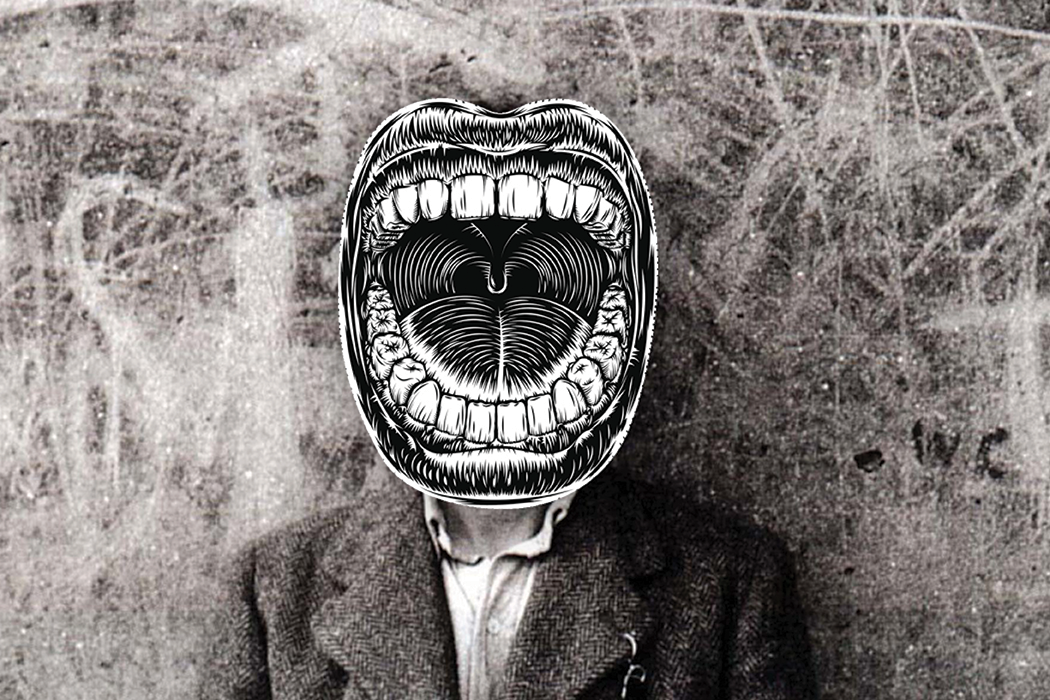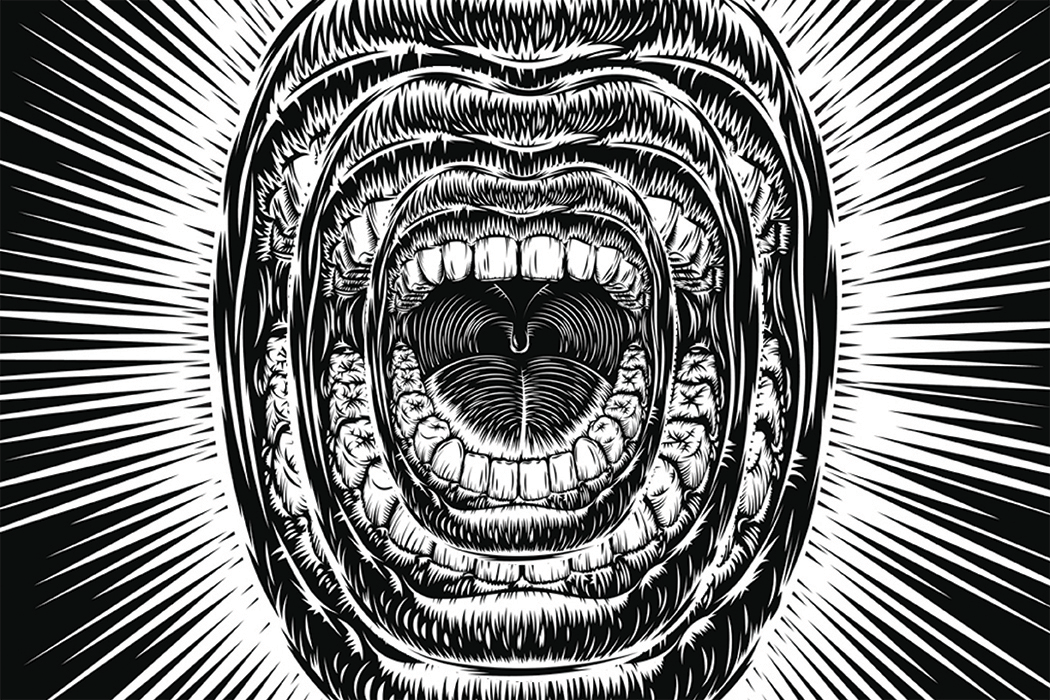When is speech violence? In a New York Times op-ed published on July 14, 2017, the psychologist Lisa Feldman Barrett argued that long-term stress can inflict serious damage on a body. One cause of long-term stress? A pattern of encountering hateful speech, “a culture of constant, casual brutality.” Deciding which speech belongs in this category is difficult; Barrett’s proposed metric is that speech is violence when it ceases to be merely offensive and becomes abusive. But this litmus test, like all taxonomical devices, represents a hazy and contentious spectrum.
Four days later, the social psychologists Jonathan Haidt and Greg Lukianoff responded to Barrett’s story in the Atlantic. According to Haidt and Lukianoff, this idea, that speech is sometimes violence, might be “the most dangerous” notion on college campuses today. It’s simply a logical fallacy, a conflation of physical harm and violence.
Audio brought to you by curio.io
The disagreement Haidt and Lukianoff have with Barrett is definitional. They treat the meaning of “violence” as a target that Barrett misses, accepting her empirical claims, but rejecting her larger conception of violent acts. Although they fail to provide their own definition of violence (possibly because choosing any one definition is problematic), they likely have in mind something along these lines: “Behavior involving physical force intended to hurt, damage, or kill someone or something,” the definition you get when you Google “definition of violence.” According to this narrow definition, Haidt and Lukianoff are right to criticize Barrett’s argument. Speech that causes harm isn’t the same as violence. Any behavior that doesn’t involve “physical force,” like speaking, is necessarily disqualified.
But Haidt and Lukianoff have committed a fallacy, too: treating a word as something with an immutable meaning. They have conflated the meaning of the word with its dictionary definition.
What, then, is the meaning of a word? If you were one of Ludwig Wittgenstein’s philosophy students, this question would have occupied the preponderance of your term, as it did Wittgenstein’s academic life. To aid in his search, Wittgenstein invented the language-game, a tool for examining and comparing the innumerable instances of language.
Wittgenstein’s language-game, briefly summarized, is the idea that we can view conversations as context-sensitive exchanges with malleable rules that help determine the meanings of words. These rules are established through social convention. We agree upon certain constraints about how words may be used and bring them to our language-games. For instance, if I point my finger at something and say “that,” you know I’m referring to that thing.
Having a common reference point like a dictionary helps facilitate communication, but when the dictionary is treated as the ultimate source of linguistic authority, we become too focused on satisfying definitions instead of interpreting the content of speech. Thinking in terms of language-games widens our considerations, and can help elucidate nuanced ideas and situations.
In a way, each language-game is spoken in a micro-dialect, one that is affected not just by region, but location, relationships, identity, history, power. When I’m having lunch with my parents, I’m participating in a different language-game than when I’m at a bar with my friends or serving coffee to strangers. Likewise, when we are determining whether some kinds of speech can be understood as violence, it’s important to examine the larger context. When Milo Yiannopoulos says “feminism is cancer,” for instance, it may be heard differently by Haidt and Lukianoff than by Lisa Feldman Barrett. As white men, Haidt and Lukianoff likely don’t have a reference point to understand what it feels like for a woman to hear these words. They won’t cut the same way.
For people who occupy positions of power in society, there may not be a single word they would ever consider violence. But that doesn’t mean other people can’t legitimately experience some speech as violence. And when people say they do experience language as violence, it’s not because they’ve confused speech with physical assault; it’s because the language-game in which the speech-act takes place is different.
For the following sentences, decide if I’m using the word “violence” correctly:
• Slapping someone in the face is an act of violence.
• Smashing a pie in someone’s face is an act of violence.
• Spanking a child is an act of violence.
• Screaming hateful words at a stranger is an act of violence.
• Pushing someone to the ground is an act of violence.
• Breaking down a door is an act of violence.
• Cheating on a partner is an act of violence.
• Attending a white supremacist rally is an act of violence.
People will likely disagree as to which of these sentences contains a proper usage of “violence.” That’s because, as Wittgenstein tells us, “usage has no sharp boundary.” Oftentimes, the only way to determine the meaning of a word is to examine how it is used. This insight, developed by Wittgenstein in his exploration of language-games, is often described as the “meaning is use” doctrine.
In his essay, “Wittgenstein’s Dictionary,” the educator John Willinsky highlights the differences between the “meaning is use” doctrine and a dictionary-first theory of meaning. “The dictionary’s careful fixing of words to definitions, like butterflies pinned under glass, can suggest that this is how language works. The definitions can seem to ensure and fix the meaning of words, just as the gold standard can back a country’s currency. What Wittgenstein found in the circulation of ordinary language, however, was a free-floating currency of meaning. The value of each word arises out of the exchange. The lexicographer abstracts a meaning from that exchange, which is then set within the conventions of the dictionary definition.”
In trying to determine whether speech can be properly understood as violence, Haidt and Lukianoff have either overlooked or willfully ignored a fundamental property of language. It’s slippery and messy and more liquid than solid, a gelatinous mass that changes shape to fit our needs, like an octopus squeezing into the cracks between rocks on the seafloor. So why is it that when we teach and speak about language it’s portrayed as this rigid thing with fixed definitions and terms that we must conform to?
According to Willinsky, “The schooled representation of meaning sets language in the hands of those who hold the proper definitions.” In other words, appeals to the dictionary serve a political purpose; they preserve existing power structures, and fortify the way things are at the expense of the way things can be.
It can appear trivial to expend so much energy on worrying about how we speak, because speech seems less tangible than physical action. But definitions always matter. In the judicial system, for example, they are key in assigning blame. The “reasonable person” standard is applied in self-defense cases to determine culpability; in this context, “reasonable” means average, ordinary. As legal scholar Jody David Armour writes in Negrophobia and Reasonable Racism, this definition of reasonable “takes the merely typical and contingent and presents it as truth and morality, objectively construed,” a pretty low bar for justice. Consider how a “rational person” test or an “omniscient person” test might change the meaning of criminality.
Similarly, there was a time in the American South when blackness, that thing that determined where one could eat, drink, and sit, was codified into law as having “one drop” of black blood. And migrants fleeing violence in Central America are rarely granted asylum in the United States because of the legal definition of “refugee.” There are profound consequences from definitions, and they should not be ceded to the staff of a reference book.
Even words without legal import can hold incredible power. Speech can’t bruise skin, but it can break a spirit. Is a feeling any less real because it happens “under the hood?” Is heartbreak not real pain? Why do we describe hurtful words as a punch to the gut or a slap to the face? For so long, the free speech debate has been built upon an incoherent premise: that speech is powerful enough to solve social ills, but can’t inflict as much damage as a fist.
Weekly Newsletter
When is speech violence? It depends on how we define it. If we define violence as a physical act, then speech is never violence. If we choose to define violence as causing harm to a person, then speech is often violence. If we choose to define violence as intentionally causing harm, then sometimes speech is violence.
If there is to be one takeaway from the work of Wittgenstein, it’s that nothing is essential in language. He spent his entire life feeling around for the atoms of speech, only to discover that he was grasping at an illusion. Language is what we say, what we mean, and what we understand—different meanings for different people in different contexts.









